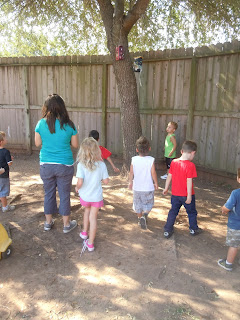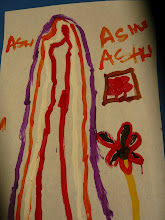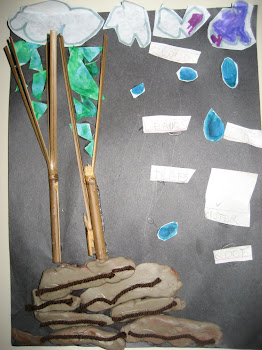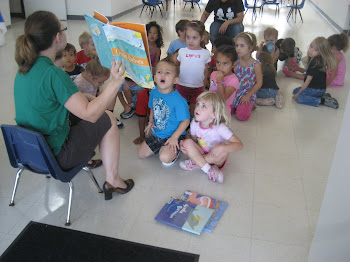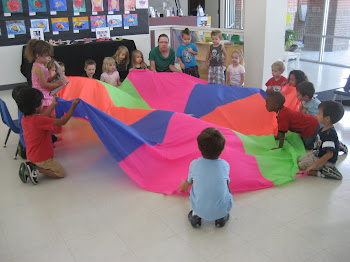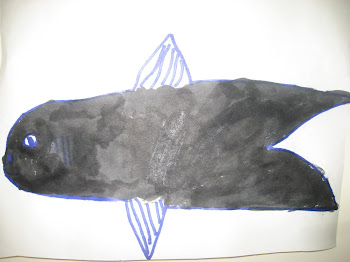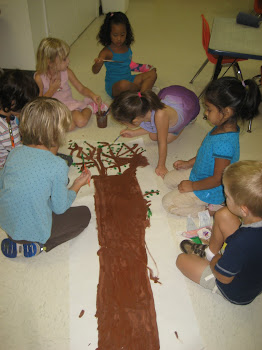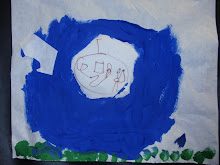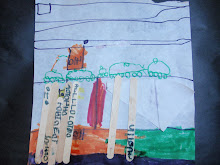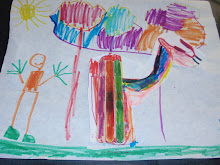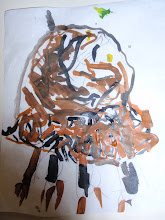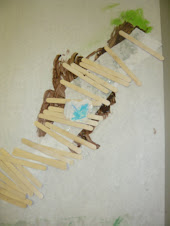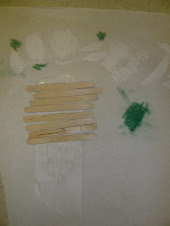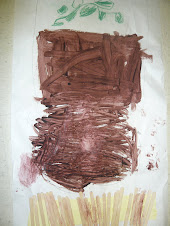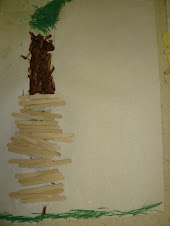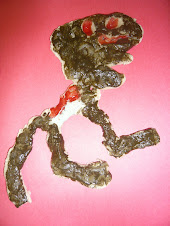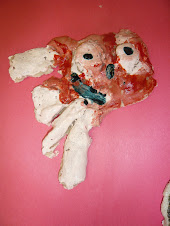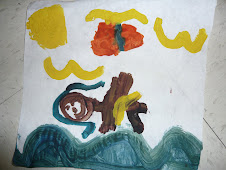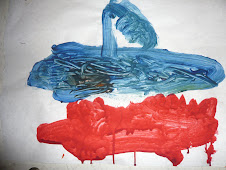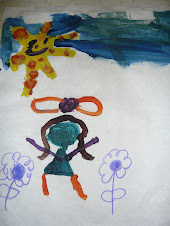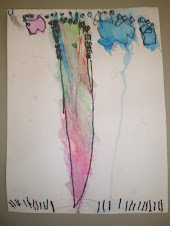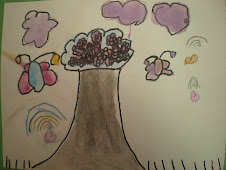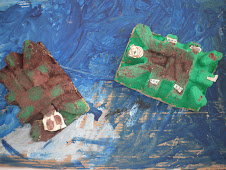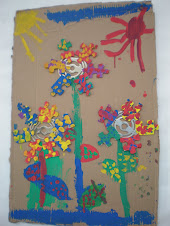Their are so many fun things to learn about Frogs! We have been focusing on the life cycle of a Frog along with creating our own images of Frogs that interest us!
We have read through books and looked on the computer to see pictures of each step in the life cycle. This helped us learn that Frogs lay their eggs in water or wet places. A floating clump of eggs is called frog spawn.
Bishop really loved this frog with the one bright green stripe along his whole body! We looked at how the front arms had four fingers and the back legs had five 5 toes on their webbed feet!
One of the ways we would like to create the life cycle is with clay! First we made lots of eggs because as we saw in the book, many eggs are produced! We learned that ducks, fish, insects, and other water creatures eat the eggs.
We talked about how tadpoles eat very small plants that stick to larger plants in the water. These tiny plants are called algae.


Eggs... Tadpoles...
Tadpole with 2 legs... Young frog with a tail..
Adult Frog!!
Another way we are creating a Life Cycle is by making a collage of each growing stage! After looking at each step closer we drew the image and used watercolors to finish it off!
By: Luke
The egg begins as a single cell. Several thousand are sometimes laid at once. It becomes surrounded by a jellylike covering, which protects the egg.
By: Sam
The tadpole has a long tail, and lives in the water. It is extremely vulnerable, and must rely on its camouflage to protect it.
By: Bishop
Over time, the tadpole becomes even more frog like. The tail becomes much smaller, and the legs grow.
By: Christian
Finally! Eleven weeks after the egg was laid, a fully developed frog with lungs, legs, and no tail emerges from the water. This frog will live mostly on land, with occasional swims. The tiny frogs begin to eat insects and worms.











































